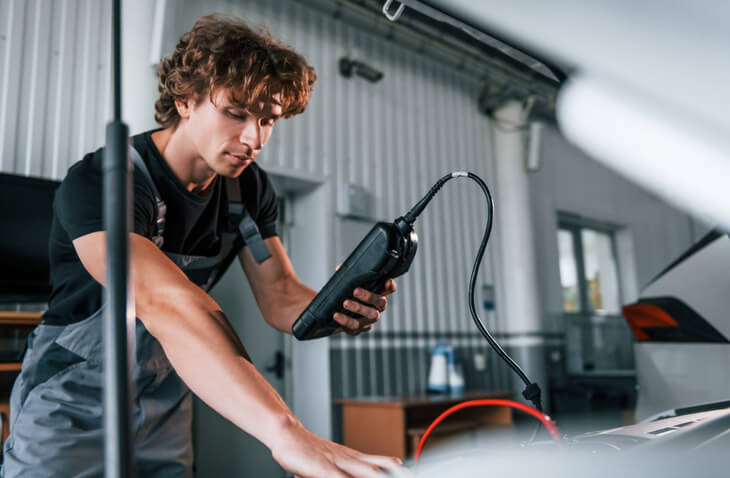Diagnosing No-Start Conditions in Modern Vehicles
When a vehicle won’t start, it’s more than an inconvenience, it’s a diagnostic challenge. No-start conditions can stem from a wide range of mechanical, electrical, and software-related issues, especially in today’s technology-packed cars. For students in automotive training, learning how to accurately diagnose these problems is an essential skill that employers value.
At CATI school, students gain the hands-on experience and theoretical knowledge needed to work through complex no-start scenarios. From battery and starter failures to immobilizer systems and ECM faults, diagnosing these issues requires a methodical approach and modern tools.
What Defines a No-Start Condition?
A no-start condition occurs when a driver turns the key or presses the ignition button and the engine fails to crank or run. It’s different from a no-crank condition, which means the starter motor doesn’t engage at all. While both are related to a failure to start, each points to different systems within the vehicle.
In many cases, the vehicle will offer subtle hints. Clicking sounds might indicate a weak battery or faulty starter relay, while complete silence can suggest an open circuit or failed ignition switch. A blinking security light may signal an immobilizer issue, and a check engine light could point toward a failed sensor or control module.
Common causes include:
- Weak or dead batteries
- Faulty starter motors or solenoids
- Fuel pump failure
- Ignition switch malfunction
- Anti-theft system interference
- Blown fuses or relays
- Engine control module (ECM) issues
Identifying the correct cause requires more than guesswork. It demands the kind of structured, step-by-step approach taught in comprehensive automotive training programs like the one offered at CATI.

Diagnostic Strategies Taught in Automotive School
At a reputable automotive school like CATI, students learn a step-by-step process for troubleshooting no-start conditions. These methods include:
- Verifying battery voltage and connections
- Checking fuses and relays in power distribution centers
- Using scan tools to retrieve fault codes
- Testing fuel pressure and injector pulse
- Inspecting ignition components and crank/camshaft sensors
- Reviewing wiring diagrams and using multimeters
Rather than simply replacing parts until the problem disappears, CATI students are trained to diagnose with accuracy and efficiency. This helps save time, reduce repair costs, and build long-term customer trust.
Why Modern Vehicles Complicate Diagnosis
Newer vehicles often incorporate push-button start systems, immobilizers, smart keys, and integrated electronics that add layers of complexity. A no-start issue might stem from a failed brake switch that prevents the system from authorizing ignition, or a glitch in the software that requires a reflash.
In automotive training, students learn how to work with these systems, interpret manufacturer-specific diagnostic procedures, and understand how modern technology interacts with starting functions.

Tools of the Trade: What Students Learn to Use
CATI provides hands-on instruction using industry-standard diagnostic equipment, such as:
- Digital multimeters
- OBD-II scanners and advanced scan tools
- Battery testers and load testers
- Lab scopes for signal analysis
- Wiring schematics and service information platforms
By mastering these tools, students graduate ready to enter the workforce, even when facing a complex no-start issue.
Turn Your Passion Into Expertise at CATI School
No-start conditions are among the most frustrating problems for vehicle owners, and some of the most rewarding for technicians. If you’re ready to take on real-world challenges and develop in-demand skills, CATI school is the place to start.
Through expert-led instruction and immersive shop time, you’ll learn how to think critically, troubleshoot with precision, and perform diagnostics that lead to accurate, lasting repairs.
Do you want to explore automotive training programs at CATI school?
Contact us for more information.

